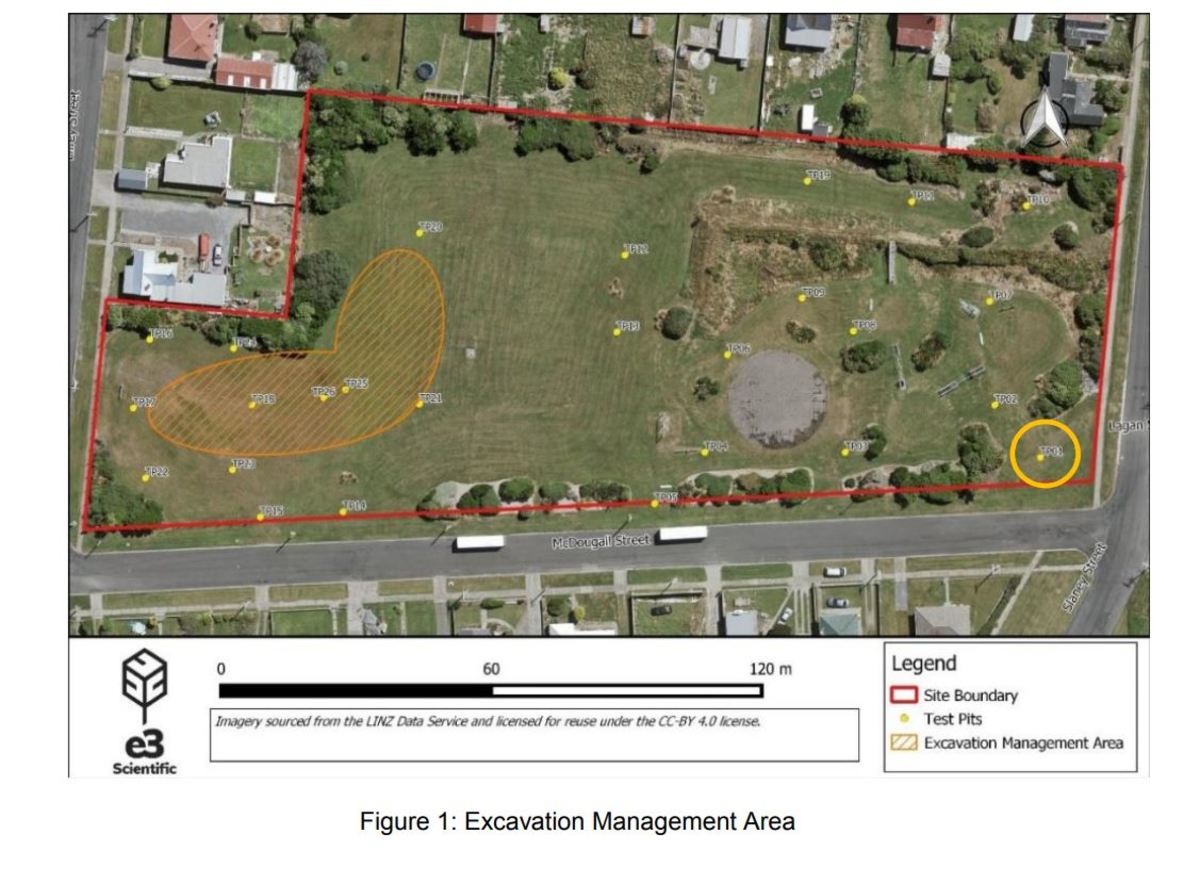Bluff reserve contamination 'no risk to public'
Paul Taylor
14 June 2021, 3:14 AM
 Hydrocarbons found in the hatched area, asbestos in the yellow circle
Hydrocarbons found in the hatched area, asbestos in the yellow circleA Bluff recreation reverse, with includes a children's playground, has been found to be contaminated with heavy metals, asbestos and petroleum hydrocarbons.
But they are in such small amounts, they pose no risk to the public.
Invercargill City Council (ICC), which owns the Slaney Street reserve, became aware back in 2019 that the land could be contaminated.
That's because from 1949 to the late 80s, it was used as a bulk fuel storage terminal and stand for filling drums and tanker wagons, operated by Europa Oil NZ and later BP Oil NZ.
Advertisement: Radhas Indian Restaurant
There were also former buildings onsite known to have been constructed with material containing asbestos, and painted with lead-based paints.
ICC commissioned consultants E3 Scientific Limited (E3S) to investigate the site.
They dug 26 test pits across the site in 2020 and then analysed 100 soil samples and two water samples for heavy metals, asbestos and petroleum hydrocarbons,
They found 32 out of 56 samples exceeded the predicted natural background background concentration of one or more heavy metals.
Advertisement: Kennedy School of Music
But all but one were well below the NESCS (National Environmental Standard for Assessing and Managing Contaminants in Soil) soil contaminate standards. One sample exceeded the soil contaminant standard for lead.
For asbestos, they found a fragment of cement fibre board containing chrysotile asbestos in one test pit, near the playground.
Chrysotile asbestos fibres and fibre bundles were found in the pit, but the concentration was less than 0.001%, the adopted guideline value. Asbestos was not detected in any other soil or bulk material samples on site.
The hydrocarbons were found in an underground clay tile drain on the eastern edge of the former filling compound.
Advertisement: Nind Dairy
This drainpipe contained a black silt clay material with high concentrations of total petroleum hydrocarbons, as did soil surrounding the pipe. The concentrations are above the guidelines for residential housing, but not for recreation. The land will remain a recreational reserve.
"Overall, the sampling and analysis programme has established that concentrations of heavy metal and hydrocarbon contaminants in soil are unlikely to present a risk to site users or neighbours," the E3S report reads.
"There may be a risk to workers involved in excavation of part of the site, where the highest concentrations of hydrocarbons were observed. This risk could be mitigated by adopting appropriate health and safety measures if workers are required to enter deep (>1 m) excavations on this part of the site."
It also found the asbestos was "highly unlikely to generate airborne fibres" but recommends some additional limited investigation "to determine whether the concentration of ACM in soil exceeds the criteria for recreational use of 0.02%, and if so, to provide recommendations for remediation or site management".
Advertisement: RD Petroleum
There should also be additional stormwater sampling at the site boundary to determine whether contaminated groundwater is infiltrating the network.
Bluff Community Board will discuss the issue at their monthly meeting this evening, Monday, June 14, with recommendations members receive the report and endorse the next steps.
You can find the full report here.
FOOD | DRINK




